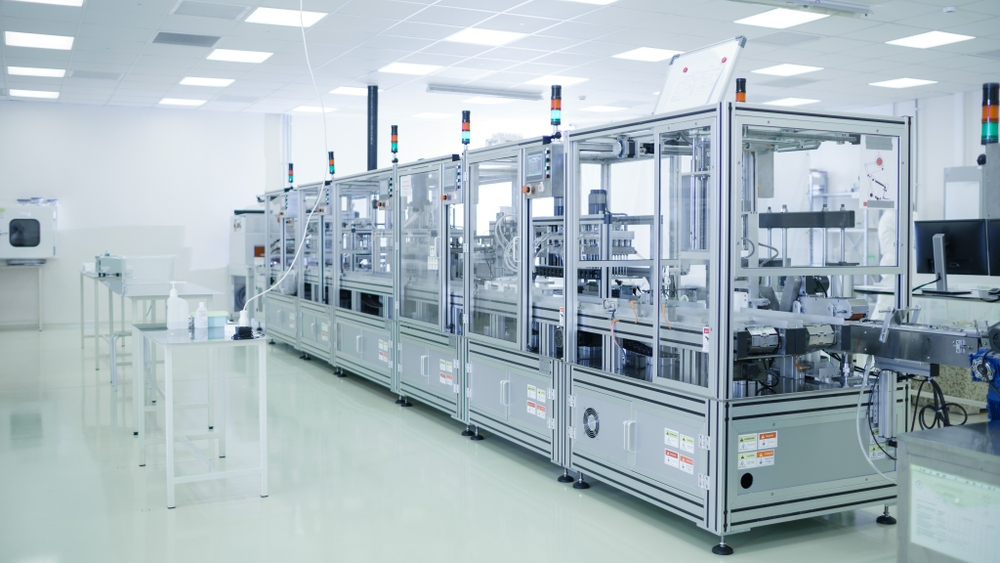There are significant benefits of additive manufacturing over traditional manufacturing. 3D printers can make it easier to scale from prototyping to production, reduce risk, and increase manufacturing agility. One of the key benefits of additive manufacturing is enabling companies to bring high-quality products to market faster than traditional manufacturing while reducing overhead costs and risks.

What Does Additive Manufacturing Look Like?
Additive manufacturing (AM) is defined as 3D printing on an industrial scale. A computer-aided design (CAD) file is sent directly to a 3D printer and converted into a 3D printing file. The product or part is built or printed by depositing material, layer by layer, to create a three-dimensional product based on the design file. When introducing a new product or modifying an existing one, the process often includes prototyping to help decide and finalize a design for production. 3D printing enables rapid prototyping and production can occur locally or in a 3D printing Smart Factory.
- Rapid Prototyping: Designs can be easily 3D printed and tested for functionality and aesthetics before design approvals or volume production. If a design has geometric specifications, unique surface textures, or a new shape, the product can be 3D printed and undergo one, or multiple reviews and a design refinement process, until the design is finalized for full-scale production.
- Production: Additive manufacturing can occur locally with single or multiple 3D printers or remotely at a smart factory with many 3D printers and more automated processes. With integrated 3D printing solutions, hardware, software, and materials designed to work together, manufacturing sites gain better yields, more consistency, and greater accuracy. It also reduces product variation between batches. and can deliver high-quality products faster than traditional manufacturing. Additive manufacturing does not require tooling and with each printer capable of producing different kinds of products, a 3D printing manufacturing site can be much more flexible.
Additive manufacturing can also augment traditional manufacturing processes. 3D printing can create jigs, fixtures, and injection molds as well as speed up prototype design exploration.
Four Key Benefits of Additive Manufacturing for Production
With advanced materials, no tooling, specialized 3D printing software, and high-printing speeds, additive manufacturing provide several advantages:
1. Reducing Holding Inventory with On-Demand Production
3D printing allows companies to support on-demand production. Companies can augment the mass production of products with 3D printing to meet unexpected demand. Producing parts or products after an order reduces the risk of unsold inventory or having to store them in warehouses until it is sold.
3D printing also reduces product waste during manufacturing, reducing the inventory of raw materials that are stored for the manufacturing process.
2. Localizing Manufacturing: Closer to Customer and Tax Optimization
The cost for a 3D printing production facility is considerably lower than traditional manufacturing with a reduction in CAPEX for tooling and specialized equipment, and less material waste and labor requirements. Additive manufacturing sites can be set up locally, bringing manufacturing closer to the consumer – lowering logistics costs or optimizing impact from tax and tariffs.
3. Design Customization
3D printing can create products with complex designs and high accuracy that is difficult or impossible with traditional manufacturing processes. It also allows easier product customization for personalized comfort and aesthetics. Multiple prototypes can print in a single batch for testing – including in the field, reducing the risk of going to market with new products.
Once the design is approved, it is used for full-scale production without adjustments as the same technology is used for prototyping and manufacturing. In traditional manufacturing, designs are often changed – multiple times – to make them manufacturable. With a completely digital manufacturing process with 3D printing, companies are more agile and can rapidly modify and produce new designs, responding to the market as needed.
4. Enables Low-Volume Production Business Models
With the ability to easily scale production with 3D printers, cost-effective low-volume production is now an option for companies. As demand increases, production volume can also increase in-step. Companies can also employ on-demand manufacturing, such as “Made To Order,” “Just In Time,” and “Same Day,” enabling new business models and improving capital efficiency.
Stay Agile with a Smart Factory Model
Companies shifting to additive manufacturing can increase business agility, capital efficiency, and overall competitiveness. With reduced labor costs and elimination of tooling, companies have greater flexibility on where they can set up manufacturing sites and strengthen supply chains.
3D printing and smart factories are simplifying manufacturing. The benefits of additive manufacturing include increasing production efficiency and enabling faster innovation – helping companies be more competitive and successful. Companies with complex product designs, low-volume production needs, or high product variety, can gain the greatest benefits of additive manufacturing.
Experience the benefits of additive manufacturing with LuxCreo’s industry-leading 3D printing solutions and patented LEAP (Light Enabled Additive Production) technology. Companies can bring additive manufacturing production capacity in-house, or use their cloud-connected 3D printers for on-demand production and scaling at a 3D printing smart factory. For more information, visit our contact page or call 1 (650)-336-0888.